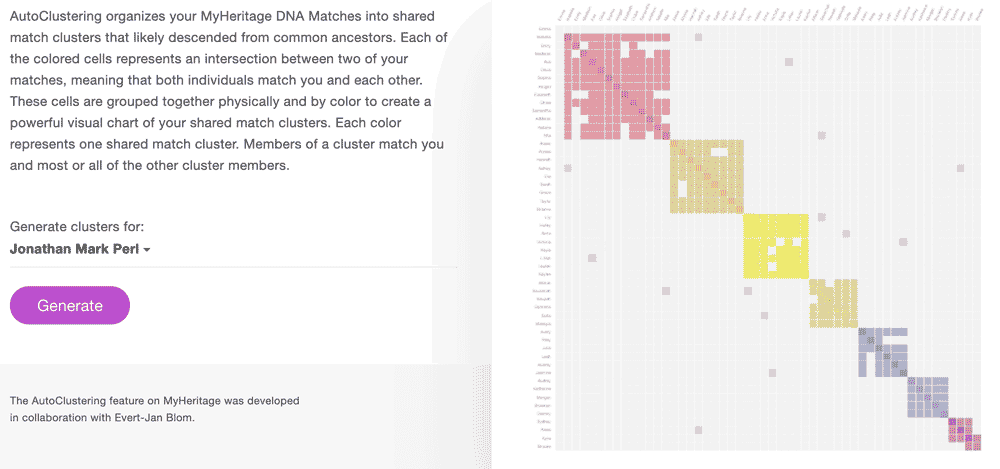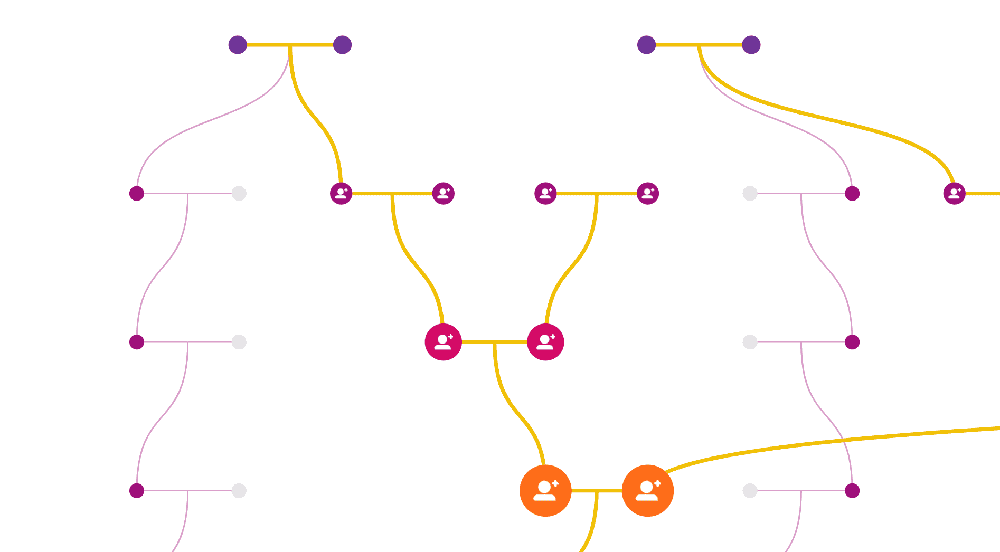I have become so used to the new genealogical leads DNA testing sites provide me with every day that I sometimes forget how amazing it is that I can do this. By combing through my match list, examining shared matches and locations of interest, I can start the long and ongoing process of identifying genetic cousins. And if I get stuck, there are always more matches to explore!
As someone who logs on to each site several times per week, I’m offering up my thoughts on the strengths and weaknesses of each. My focus is on DNA matches (as opposed to origin estimates), since this for me is the most interesting part, although the availability of segments corresponding to these estimates is something I hope to see more of.
I am grateful for what each of these companies do for the genealogical community and I hope these suggestions are simple and constructive! I’ll also be adding a section at the bottom with the best suggestions from readers that I’ve overlooked.
A general comment
I’ll start with what is for me one of the most important omissions on most sites. When I log into a testing platform, the first thing I want to do is very simple:
- See a list of any unviewed matches, with those that I share the most DNA with at the top
At the moment, this is difficult on every site other than AncestryDNA, which has a simple but effective ‘Unviewed’ filter.

The other sites just allow you to sort by date added.
- This is actually fine for Living DNA and FamilyTreeDNA, because their databases aren’t that huge.
- But on the bigger sites, a torrent of new smaller matches arrives every day, meaning it’s quite easy to miss significant new matches
So in addition to “sort by date”, a filter restricting the list to unviewed matches feels necessary on the bigger sites.
OK, I’ve got that off my chest. Here are some company-specific thoughts.
Living DNA
This British-based company has what feels like a very fresh userbase, with many matches who are not other testing sites. The match list also features a very useful snapshot of how active the user is, which can be used to gauge how worthwhile it might be to contact them.

The platform is still under development, with many planned features existing only as placeholders right now. My Living DNA wishlist:
- Additional information for DNA matches:
- The number of segments (not just the total cM!)
- For example, a 50cM Irish or English match might be across 1-3 segments and could potentially be within reach, while a 50cM Jewish match is more likely to consist of 7 or more tiny segments indicating multiple historical connections due to endogamy
- A place where users can reveal genealogical information. This could be a simple list of family names or a link to a tree in the first instance.
- The number of segments (not just the total cM!)
- A clearer user interface. This has improved hugely, but there are still a few odd quirks, such as
- Shared matches are sorted with the smallest first
- Segment data for matches. This would allow Living DNA matches to be used for chromosome mapping.
- Segment data for the ancestry composition (that is, the county-by-county estimates) would also be amazing, particularly for those of us with English ancestry

FamilyTreeDNA
A pioneer of direct-to-consumer DNA testing, FamilyTreeDNA was founded more than 20 years ago and offers Y and mitochondrial tests as well as autosomal.
Their database isn’t the largest, but the site has some great features:
- Matches can add trees and lists of last names
- You can obtain segment data for each match and export all your data into spreadsheet format
- It’s possible to transfer tests from other companies
Perhaps their most powerful feature is the ability to ‘bucket’ matches once you’ve identified close testers in your tree. For example, if you have a paternal cousin tested and you indicate this at FTDNA, other matches who share the same DNA will be labelled as paternal.
When they announced the rollout of MyOrigins 3.0 last year, FTDNA also confirmed that “chromosome ethnicity painting” will be coming soon. This feature, currently available only at 23andme, will be eagerly awaited by keen chromosome mappers!
My FTDNA wishlist:
- Remove tiny segments. These 1 to 7cM segments currently inflate the total cM artificially.
- Right now, it’s necessary to use the chromosome browser and remove these from the total (either manually or using the individual match filter at DNA Painter)
- It also means there are misleading ‘X-match’ flags based on a 1cM segment!
- Clustering. The addition of an on-site tool to cluster matches
- Better handling of endogamy. This really applies to all sites, but I’ll use FTDNA as an example. My father’s father was a German Jewish man and his mother a non-Jewish English woman. He may have matches via his mother at FTDNA, but I have no obvious way to identify them!
- I feel as if there is a possible opportunity to ‘bucket’ the matches based on a more abstract question ‘does this match seem like it’s due to endogamy’
- Also, if the bucketing capability was extended, perhaps it might be possible to infer some matches as maternal based on them overlapping but not triangulating with paternal matches?
- Or perhaps he just has no English matches in their database!

MyHeritage
It’s amazing to think that MyHeritage entered the DNA business less than five years ago. Their site has several great features:
- Transfer your DNA from other companies as well as downloading your segments and match data
- Genetic groups, with the ability to check and filter by the genetic groups of your matches
- See linked DNA matches and trees with ‘Theory of Family Relativity’, and investigate matches in more detail in the chromosome browser
- Find out how much DNA your matches share with other shared matches
- Autoclusters, a powerful automated way of grouping your matches

My MyHeritage wishlist:
- A filter for unviewed matches (as mentioned above). The database is now sufficiently big that this is really needed.
- Some kind of adjustment of the thresholds for shared segments:
- The segment threshold is 6cM. Chromosome mapping seems to indicate to me that many of the 6-7cM segments are false.
- For reasons that aren’t clear to me, the chromosome browser sometimes doesn’t show a triangulation where there should be one (there’s an example of this at the end of my recent blog post)
23andme
With their slick and powerful website, 23andme provides a very useful platform. My top features:
- Simple process of opting into sharing segment data, along with the ability to compare your opted-in matches to each other.
- Download segments corresponding to the ancestry composition estimate
They also have a rather impressive automatic family tree feature where they try to connect your matches using DNA alone. This is still in its earliest stages but I expect it to be very useful in future.

23andme will only show you your first 1,500 matches. US-based users can upgrade for $29 annually to see up to 5,000, but this option is not available to me.
My 23andme wishlist:
- A filter for unviewed matches (as mentioned above; I’ll stop going on about it now!)
- A more flexible cap on matches…
- While both my mother and father have tested at 23andme, only 88 of my 1,500 matches (fewer than 6%) are maternal
- The rest of my list is dominated by distant paternal matches with Jewish ancestry where there are multiple connections, almost certainly from long before the genealogical timeframe
- I would like to be able to remove these matches from my list to make room for English and Irish matches where I have a better chance of finding a connection
- Reduce the number of steps required to find segment data
- If the site loaded the segment data in when I click ‘View DNA details’ this would save time.
AncestryDNA
Ancestry’s site has the biggest database of DNA testers and for this reason, many experts suggest it as the best place to test first.
It has some distinctive features:
- A great interface for filtering your match list by cMs shared and more.
- A system called ‘Timber’ strips out segments that are common in the population and which may not be genealogically relevant
- You can now see the unweighted amount by clicking on the cMs shared. This can be useful if you’re trying to figure out why the numbers for the same match vary between sites.
- Group matches using coloured dots; very helpful for creating networks of interrelated matches.
- I believe this was introduced after Blaine Bettinger self-funded a Chrome plug-in to do exactly this, so we should thank him as well!
- Thrulines uses trees to try and find common ancestors automatically
- As I write, AncestryDNA is also rolling out a new interface allowing you to confirm relationships to DNA matches.

My AncestryDNA wishlist:
- An opt-in allowing users to share segment data
- This could be a very dry table of segments that the two people match on; nothing elaborate but very useful for chromosome mapping!
- The option to lower the shared match threshold to say 15cM. As someone struggling with mostly distant matches, this would be tremendously helpful.
- Increased reliability. The situation has improved tremendously, but there are still occasional connection issues that make it impossible to view matches and/or trees.
Possible improvements that apply to all sites
Smarter relationship estimates
For example: the testing companies know that I am around 25% Ashkenazi Jewish. They also know that a Jewish match of 43cM over 5 segments is unlikely to be a 3rd-5th cousin. So it would be great if this could be taken into account:
- In the first instance the notification email could include the number of segments
- Ultimately perhaps the sites could downgrade the relationship estimate somehow. This currently happens to a degree at 23andme and at Ancestry (via their Timber algorithm), but it feels as if more refinement would be possible.
More powerful use of opted-in user data
The testing sites could potentially be detecting recombination points for us by comparing the position where we stop sharing DNA with a match to the position where relatives stop sharing with the same match
- This would tell us that one of our direct ancestors had a crossover at this point where they switched from inheriting DNA from one grandparent to inheriting it from the other grandparent on that side
- The evidence this provides for those of us attempting to piece together our chromosome map could be invaluable
That’s all from me! Inevitably these suggestions are influenced by my interest in segments, which I know not everyone shares, but I hope it has been an interesting read anyway.
Contact info: @dnapainter / jonny@dnapainter.com
